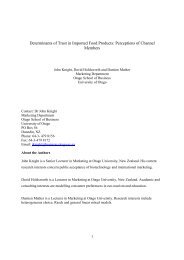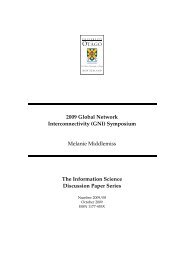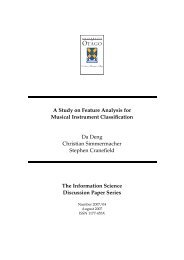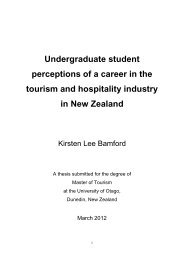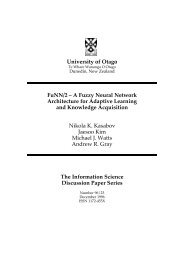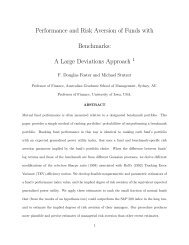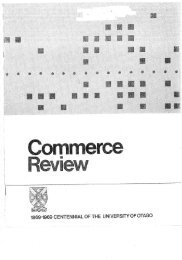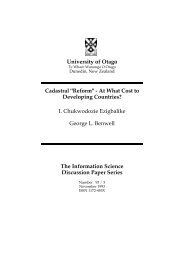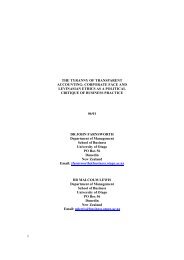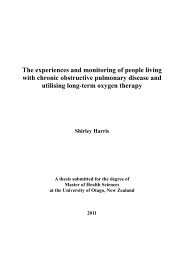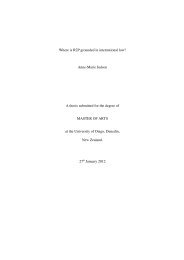Reframing perceptions of anthropomorphism in wildlife film and ...
Reframing perceptions of anthropomorphism in wildlife film and ...
Reframing perceptions of anthropomorphism in wildlife film and ...
Create successful ePaper yourself
Turn your PDF publications into a flip-book with our unique Google optimized e-Paper software.
<strong>wildlife</strong> television broadcasts <strong>and</strong> has shaped our expectations <strong>of</strong> how animals should be<br />
represented on <strong>film</strong> (Pierson 2005). From BBC‘s epic David Attenborough Life <strong>of</strong><br />
series to the quirky <strong>in</strong>ternal monologue narrated The Bear, <strong>in</strong>dividual animals battle<br />
aga<strong>in</strong>st the odds <strong>in</strong>herent <strong>in</strong> their harsh natural surround<strong>in</strong>gs, just as the seals first did <strong>in</strong><br />
Disney‘s Seal Isl<strong>and</strong>. K<strong>in</strong>g (1996) correctly defends the Disney formula, say<strong>in</strong>g that it<br />
does not matter if representations are naturally correct, only ‗humanistically correct‘.<br />
By portray<strong>in</strong>g the animal world <strong>in</strong> ways the audience could readily underst<strong>and</strong>, Disney‘s<br />
<strong>film</strong>s elicited empathy from the audience <strong>and</strong> simultaneously allowed generations <strong>of</strong><br />
audiences to form a good general underst<strong>and</strong><strong>in</strong>g <strong>of</strong> nature.<br />
3.3) March <strong>of</strong> the ‘Fuzz-u-mentaries’<br />
The c<strong>in</strong>ematic release <strong>of</strong> March <strong>of</strong> the Pengu<strong>in</strong>s (Jacquet) <strong>in</strong> 2005 (US release date)<br />
signaled a new era <strong>of</strong> criticism <strong>of</strong> sentimentalised anthropomorphic techniques. The<br />
<strong>film</strong> heralded a sub-genre <strong>of</strong> it‘s own, Thomson (2007) call<strong>in</strong>g it the ‗fuzzumentary….<br />
<strong>in</strong> which creatures <strong>of</strong> the wild are turned <strong>in</strong>to almost-human characters on the big<br />
screen.‘ Yet, whatever <strong>film</strong> theorists may have called it <strong>and</strong> however much they<br />
criticised it, March <strong>of</strong> the Pengu<strong>in</strong>s was a worldwide phenomenon. It is the second<br />
most f<strong>in</strong>ancially successful documentary ever made, earn<strong>in</strong>g over $127 million <strong>in</strong> gross<br />
pr<strong>of</strong>its (Miller 2005 <strong>and</strong> Thomson 2007) <strong>and</strong> revealed that even an audience two<br />
generations removed from the Disney True-Life Adventure formula, are receptive to the<br />
<strong>in</strong>fluences <strong>of</strong> <strong>anthropomorphism</strong> as a <strong>film</strong>mak<strong>in</strong>g technique.<br />
The largely unexpected success <strong>of</strong> the <strong>film</strong> helped to <strong>in</strong>stigate the recent emergence <strong>of</strong><br />
co-producer <strong>and</strong> distributor, ‗Disneynature‘ <strong>and</strong> may herald a renaissance <strong>in</strong> <strong>wildlife</strong><br />
c<strong>in</strong>ema. Of nearly 300 documentaries that were released from 2002 through 2006 <strong>in</strong> the<br />
USA, only eight were <strong>wildlife</strong> documentaries, <strong>in</strong>clud<strong>in</strong>g March <strong>of</strong> the Pengu<strong>in</strong>s<br />
(Thomson 2007). However, their comb<strong>in</strong>ed gross <strong>of</strong> $163.1 million was a significant<br />
26 percent <strong>of</strong> the $631 million total gross, reveal<strong>in</strong>g the grow<strong>in</strong>g f<strong>in</strong>ancial gravitas <strong>and</strong><br />
importance <strong>of</strong> the c<strong>in</strong>ematic <strong>wildlife</strong> genre (Wade Holden quoted <strong>in</strong> Thomson 2007).<br />
The <strong>film</strong> March <strong>of</strong> the Pengu<strong>in</strong>s follows Emperor Pengu<strong>in</strong>s on their annual migration to<br />
their breed<strong>in</strong>g grounds. It was marketed as a love story set aga<strong>in</strong>st the harsh realities <strong>of</strong><br />
nature (Figure 3.3) – a theme evident <strong>in</strong> many <strong>of</strong> Disney‘s first True-Life Adventures.<br />
The pengu<strong>in</strong>s undertake an epic journey, walk<strong>in</strong>g thous<strong>and</strong>s <strong>of</strong> kilometres to reach their<br />
18




